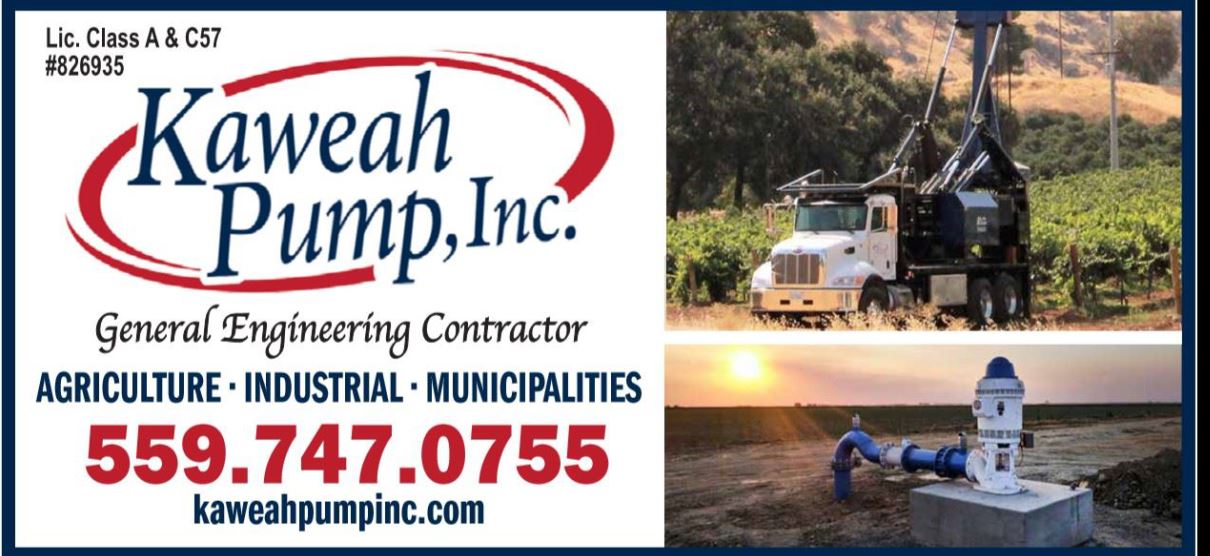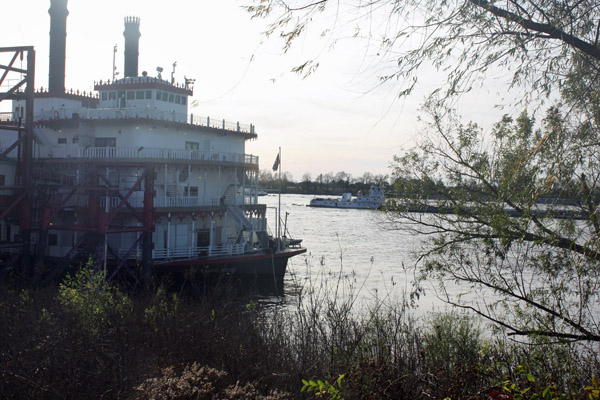 The Kern Water Bank Authority held its board of directors meeting on Tuesday, January 7, 2020 at its Bakersfield headquarters. It was cold and gray outside but the conference room was warm and friendly. General Manger Jon Parker had a video of pelicans swimming around one of the ponds with soothing music. They have an 80” hi-def TV in the boardroom. The experience was pastoral and calming. There was also a photo of a Tule Elk and I’m sorry they aren’t running around the Valley anymore. Look like good eating. On my recent trip to Louisiana some joker added artwork to the beware of elk and deer signs. Those yellow signs on the side of the road. About 20-miles of east bound I-40 had bunch of them showing the silhouette of the of the Cervidae emitting flatulence. I would have taken a photo but it was the middle of the night, 11 degrees above zero and the traffic was moving fast.
The Kern Water Bank Authority held its board of directors meeting on Tuesday, January 7, 2020 at its Bakersfield headquarters. It was cold and gray outside but the conference room was warm and friendly. General Manger Jon Parker had a video of pelicans swimming around one of the ponds with soothing music. They have an 80” hi-def TV in the boardroom. The experience was pastoral and calming. There was also a photo of a Tule Elk and I’m sorry they aren’t running around the Valley anymore. Look like good eating. On my recent trip to Louisiana some joker added artwork to the beware of elk and deer signs. Those yellow signs on the side of the road. About 20-miles of east bound I-40 had bunch of them showing the silhouette of the of the Cervidae emitting flatulence. I would have taken a photo but it was the middle of the night, 11 degrees above zero and the traffic was moving fast.
KWB Chairman Bill Phillimore called the meeting at 3:00 pm and the board approved the minutes, the treasurer’s report and paid its bills. In the midst of this there was a discussion about water quality and things are alright with supplies passing by the water bank in the California Aqueduct. There was also some questions about the books and Danelle Lopez had all the answers. Good for her. It’s not like she was interrogated, but rather she was competent and prepared under question. Good for the protectors of the public weal for asking.
There was a presentation by PG&E’s Maggie Warner and Christine Forster to discuss the new prices and rate structure along with Cody Coeckelenbergh of Lincus Energy. The topic was the Water Infrastructure and System Efficiency Program – WISE. Lincus has been working with the KWB since 2015 and distributed $650,000 to the bank for completing energy efficiency incentives saving 8.5 million kWh/yr.
Coeckelenbergh said there are 40 pumps that are under-performing and he offered zero percent loans to fix the problem. It’s called the On Billing Finance. He explained how the program works. Wet times and recovery will help offset the dry times and recharge costs. Rob Yraceburu asked if this is an unsecured loan and the answer was – not sure. Coeckelenbergh said his deal is to prove to PG&E there was savings before he gets paid. However, there won’t be a lien on KWB property and until the equipment is purchased there is no commitment from the KWB. Phillimore asked who actually pays figuring it will be the KWB paying somehow within the PG&E bill. There are five wells identified. Using a five percent interest rate this program will save $45,127 on a $385,000 loan over a four-year term. Dale Melville re-asked Phillimore’s earlier question, who pays for the zero rate? Again there was no sure answer. There is a fund but Melville was pretty sure the rate payers are paying. Coeckelenbergh said the Public Utilities Commission is still working on how to make this work. I believe I’ve got to be confused but it sure sounded to me like that period during the French Revolution when there was a serious proposal to make whatever amount of money a man had the exact amount he owed. They also cut off a lot of folks’ heads.
Warner explained the new PG&E program. She explained the peak period of energy use was mid-day but with the increase of renewable energy the peak time is moving later in the day. It used to be noon to 6pm but now it’s 5pm to 8pm. Summer months used to run from May to October but will now go from June to September. Commercial and industrial times will change also. There is a new Ag-F for flexibility rates. Warner said this option works much better when there are good surface water supplies and hasn’t been able to do much good in the South Valley. All the new smart meters work on the proposed programs. There was a time PG&E had to change meters for different programs for some reason. Forest said the residential rate program is changing but that hasn’t been rolled out yet.
Ag can start using the new program now by opting in. It becomes mandatory in March 2021. The March 2022 default date will highly impact ag users who haven’t opted in yet. Yraceburu asked if demand charges will drop and Warner said they could a bit. He thinks as more solar comes online will a utility increase demand charges to make up for less power sales. Forster said there is already a solar fee for residential. She said batteries will be the big game changer. She said electric cars don’t pay a road tax because they don’t buy gasoline. Solar users are back on the grid after sundown.
Greg Hammett, GM of West Kern WD reported the round about out by the water bank was going pretty good but he almost got hit by another driver so be careful out there.
Bill Taube has retired and Sheridan Nicholas, GM Wheeler Ridge has taken his place. Phillimore pointed out Taube, Scott Hamilton and Will Boschman have all retired recently. He’d like to have a dinner in the not too distance future. That’d be cool.
The next item was who to replace Taube with on the Kern Groundwater Authority board for the KWB. The KGA only allows one representative per GSA and since the KWB member all represent their home boards which belong to other GSAs. If I understand a director at the KGA needs to be an elected official but Taube was a retired Wheeler Ridge guy.
Parker gave a water report for the bank and said groundwater levels have dramatically improved; especially the shallower zones but the deeper levels are raising as well. He reported on maintenance work. Forty basin structures and six road crossings have been replaced. The Strand Siphons plans are under review. The estimated cost is $425,000 and bids are going out or have gone out. I wasn’t sure. Three replacement wells are in the process of being finished. One well was abandoned. One well has had a lot of trouble but seems to be turning around after treating the casing. Parker and Superintendent Nick Torres said due to very high shallow water levels they have a Caterpillar stuck up to the belly.

The bank had 3,200 acres of habitat mitigation is now at 2,000 something acres and the KWB made $1.8 million in sales this year and almost all of it was Caltrans.
The next KGA meeting will be Wednesday the 15th. This meeting will purportedly be the one where the GSPs will be adopted. Parker thinks the DWR is going to get 9,000 highly readable pages from the KGA. Phillimore noted the consulting firm found a way to bill just about every penny the KGA received in grant. The meeting then went into closed session.
DISCLAIMER OF RESPONSIBILITY; Waterwrights strives to provide his clients with the most complete, up-to-date, and accurate information available. Nevertheless, Waterwrights does not serve as a guarantor of the accuracy or completeness of the information provided, and specifically disclaims any and all responsibility for information that is not accurate, up-to-date, or complete. Waterwrights’ clients therefore rely on the accuracy, completeness and timeliness of information from Waterwrights entirely at their own risk. The opinions expressed in this report are those of the author and do not represent any advertisers or third parties.
ALL RIGHTS RESERVED. Copyright 2020 by Don A. Wright
1620 Mill Rock Way, Bakersfield, CA 93311 Office: 661/398-4900 www.kwb.org
Staff: Jon Parker-General Manager, Danelle Lopez-Accountant, Steve Torigiani-Attorney, Nick Torres-Superintendent
Board: William Phillimore-Chair Westside Mutual Water Company, William Taube-Vice Chair Wheeler Ridge Maricopa Water Storage District, Steve Jackson-Treasurer Dudley Ridge Water District, Dennis Atkinson Tejon Castac Water District, David Beard KCWA Improvement District 4, Wilmar Boschman Semitropic Water Storage District & Kim Brown Westside Mutual Water Company
Located on a large, undeveloped section of the Kern River’s sandy alluvial fan, the Kern Water Bank covers nearly 30 square miles over California’s southern San Joaquin Valley. Ideally situated, both for its unique geology and its proximity to water supply and delivery systems, the Kern Water Bank plays a dual role in California’s economically vital agricultural heartland.































